
 |
Floor Plan |  |
The Dennis Wheatley 'Museum' - Dennis Wheatley's Writing Technique
An overview of DW's production methodology
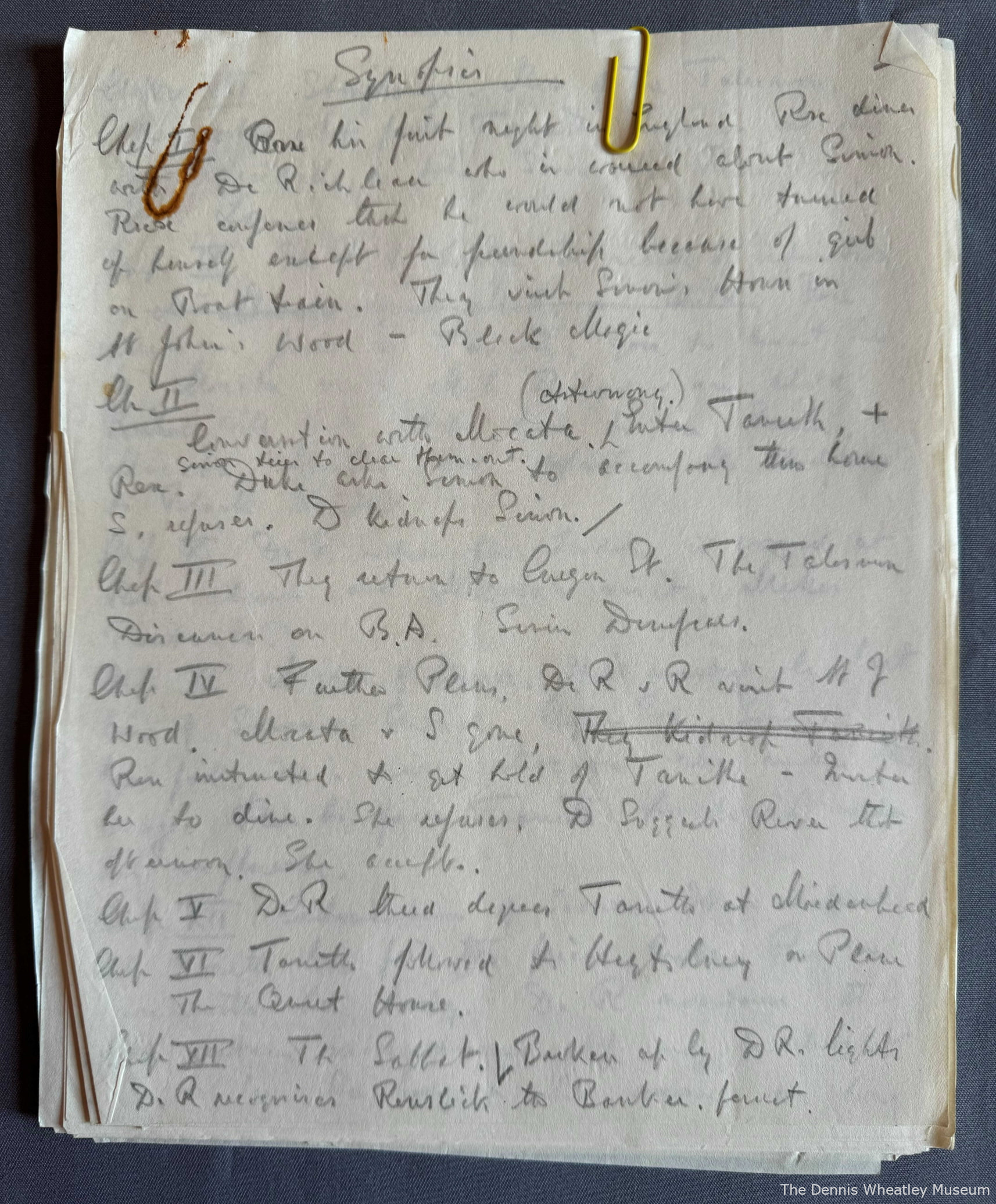
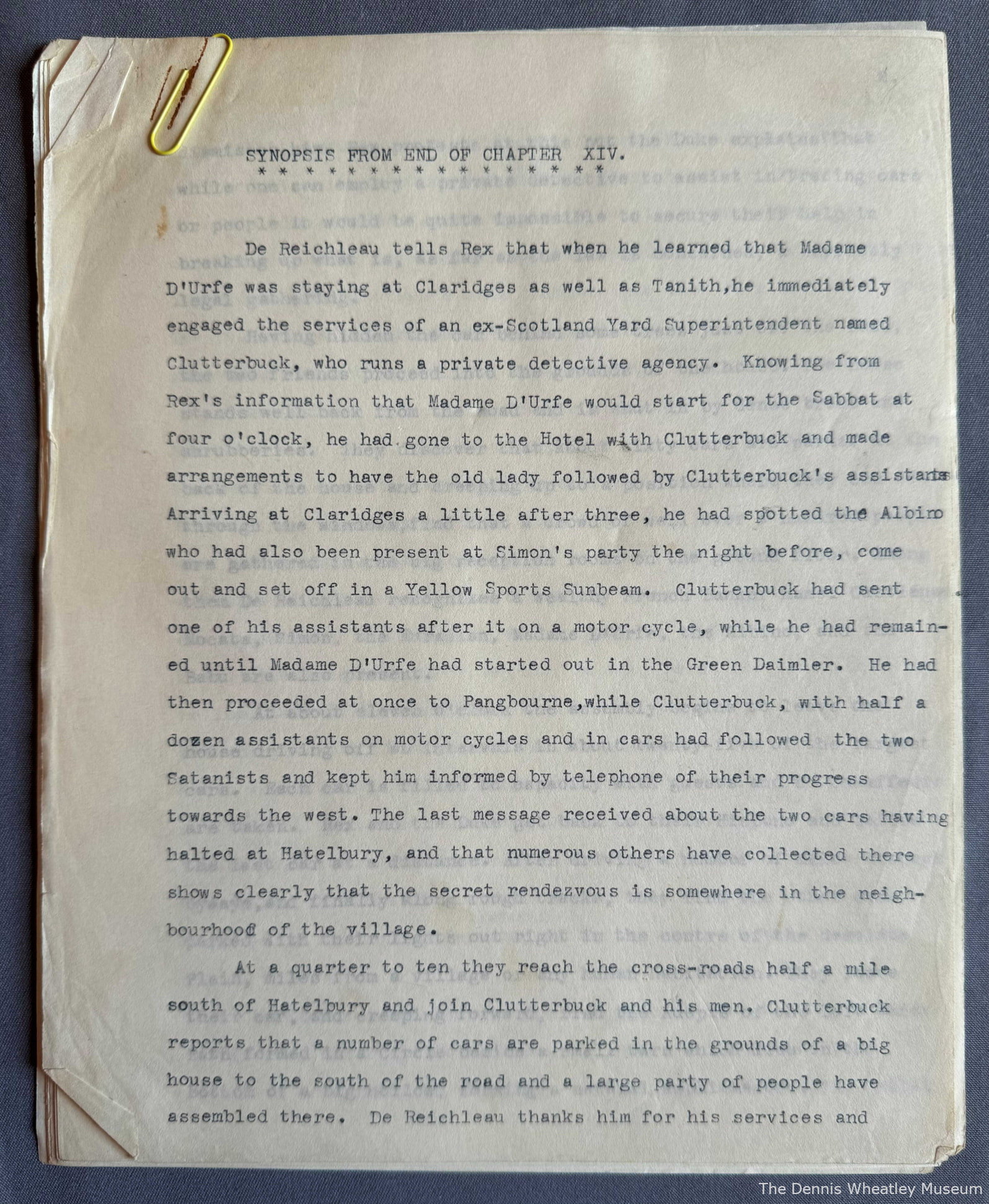
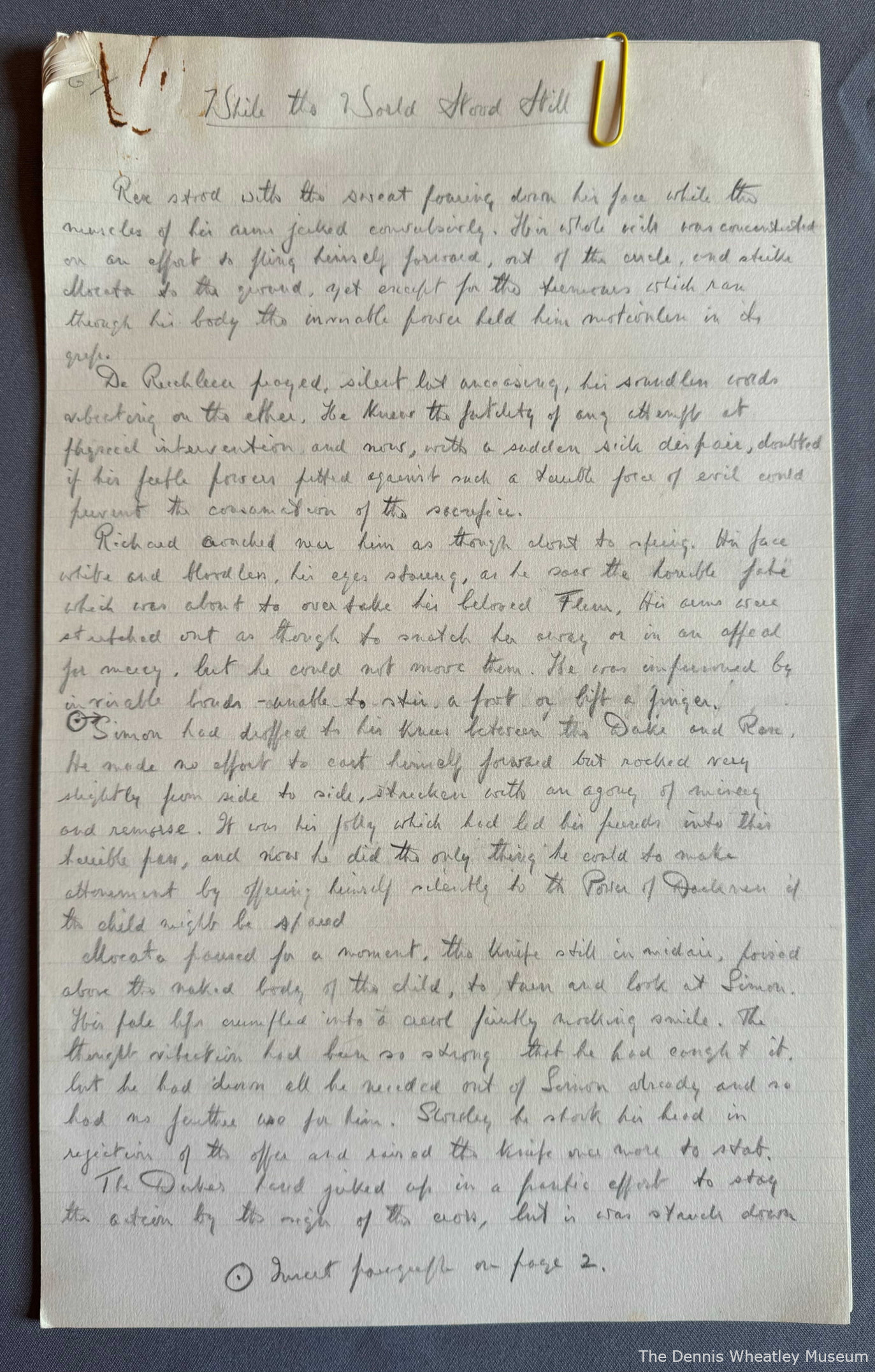
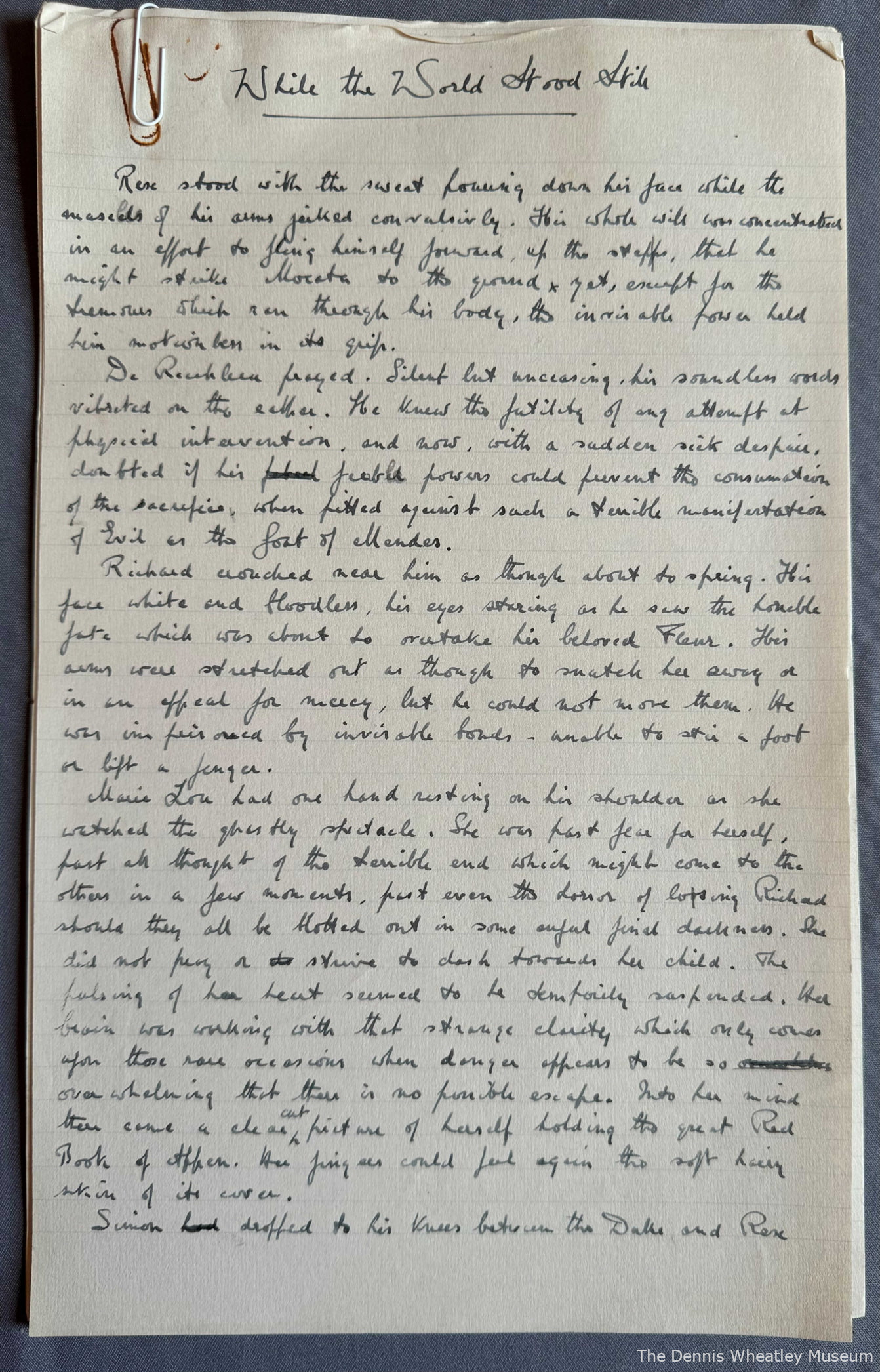
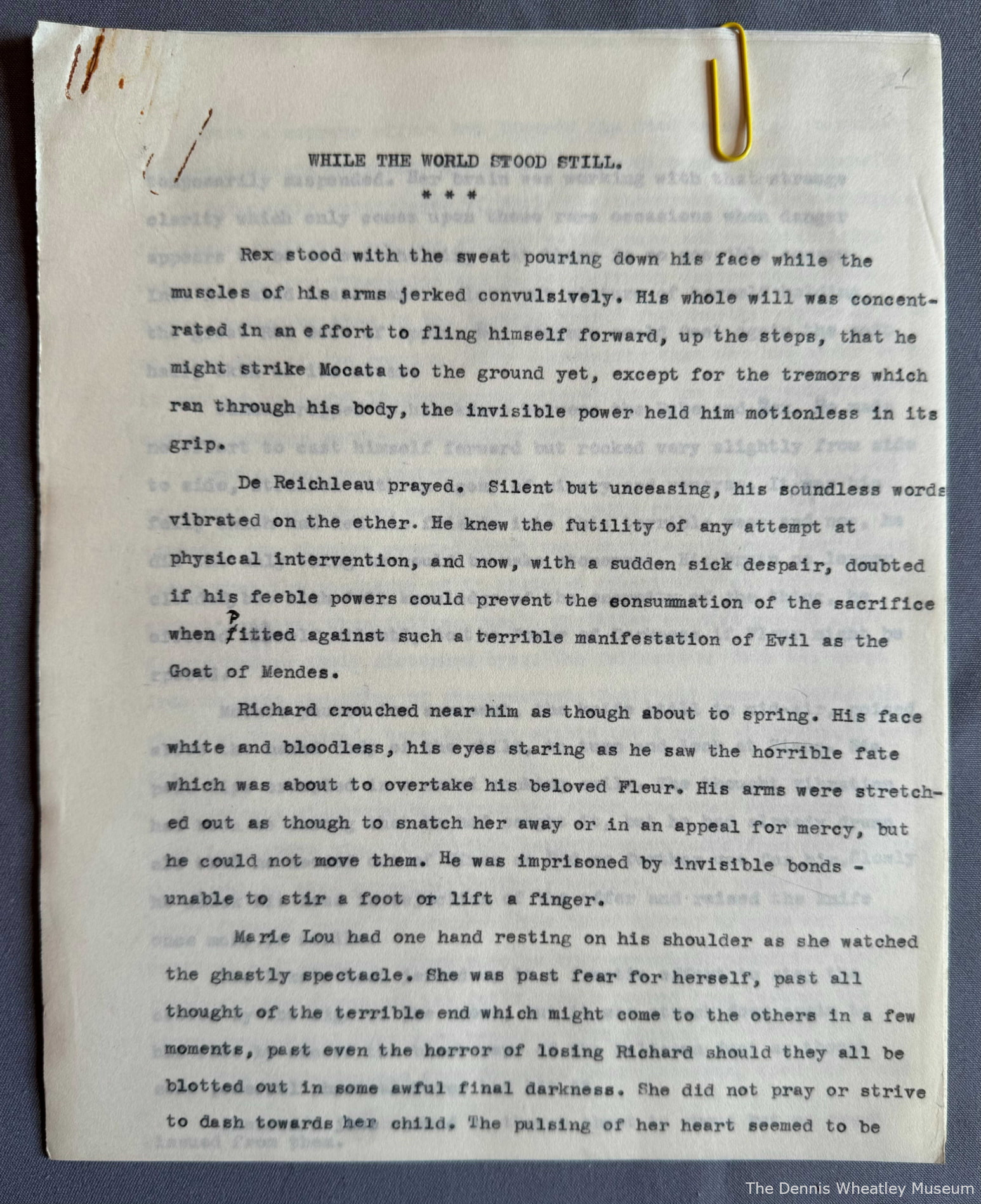
The various stages in DW's writing of 'The Devil Rides Out' (1934)
Top to bottom, left to right: The pencil synopsis, the typed synopsis for the serialisation, the pencil draft, the ink draft and the annotated typescript
Click on the images to enlarge
| Period | Method |
| 1917 to circa 1939 |
|
| 1939 to circa 1941 |
|
| 1945 onwards |
|
While he was a born storyteller and rich in imagination, DW was the same time the most systematic of writers.
As the above table shows, and from an examination of the manuscripts, it is clear that DW's method of writing a book evolved over time, and he was not averse to experimentation. These experiments were nevertheless variations on a theme, and all of his novels went through most if not all of the following stages, the key steps of which are outlined in the table above:
- A decision on the basic essentials of the forthcoming book - the hero and the broad storyline.
- Any necessary research. On how this was done for his historical novels, see a later exhibit.
- Where historic events form the backdrop to the story (which is not invariably the case) DW writes down a timeline of events
- DW plans out the entire book, and writes a pencil synopsis of the many events to take place in every chapter. Sometimes this synopsis goes through as many as three or four iterations.
- DW then writes the entire book in longhand in pencil. Where amendments take place (and there are surprisingly few), they tend to take the forms of crossings out rather than rubbings out despite his comments to the contrary (possibly because crossing out was quicker and less messy).
- In his early years of writing (1917 to circa 1939), DW would then re-write the entire novel in ink. DW dispensed with this step circa 1939; either to save time or because he made his pencil handwriting more legible.
- The novel would be typed up with several carbons. In the earliest days this would be done by Joan; later this was done by a secretary.
- The novel would then be sent to the publisher (Hutchinson's). They would generally commission a Reader's Report, which would be shared with DW.
- DW might (or generally one suspects, did not) make changes in consequence.
- The novel went into production. Proofs would be carefully read by several parties, and further corrections made.
Post production, there were then additional stages:
- Marketing
- Keeping a close eye on sales. In the early days, DW kept detailed pencil accounts of his sales and takings in manuscript.
- Retrospective assessments. DW wrote privately in his own copies of his books what he thought of them. And DW was honest; some books he considered very good, but others he was not so proud of. In one of these ('Curtain of Fear'), he wrote in his copy 'My worst book yet'. In making these assessments, DW had no ego. He learnt from these assessments and from how the books fared with his public - writing more wartime Gregory Sallust books because the public wanted them, but writing only three of his intended seven Julian Day novels because the public did not warm to the character.
All these stages are looked at in more detail in other parts of the Exhibition.
The only significant departure from this methodology was from 1939 to 1941, during which DW switched from writing his novels longhand in pencil to dictation. During this period, he still began however by writing his list of historical events and his synopsis in pencil.
Why DW made this change (which he never seems to have referred to in interviews) is unknown. Possibly it was because it enabled him to write the novels more quickly (which would have been vital with his wartime Gregory Sallust novels, but probably not for 'Sixty Days To Live'), or perhaps it was because there was a paper shortage. In any event, it seems it was not a shortcut with which he was comfortable, because from around 1945 he reverted to writing his books in longhand in pencil.
| Provenance: | Private Collections |

